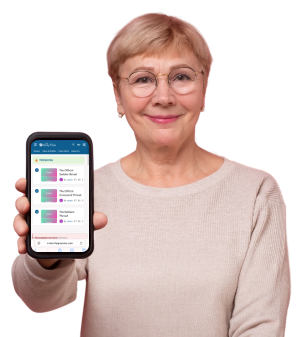Maximize Your Retirement Funds: Smart Strategies for Unneeded Withdrawals!
By
Aubrey Razon
- Replies 0
Retirement is often seen as a peaceful time, where the busy workdays are left behind, and life slows down for relaxation and reflection.
But even in this calm stage, there are financial duties you can't skip, like Required Minimum Distributions (RMDs) from your retirement accounts.
If you are unsure what to do with your required minimum withdrawals, then here's your guide to strategically managing those funds—even if you don't need the cash.
Since 2023, the age at which most retirees must start taking RMDs from pretax retirement accounts has been set at 73.
The initial deadline is April 1 following the year you turn 73, with subsequent RMDs due by December 31 each year.
These rules are more than just a calendar note; they're a pivot point for strategic financial planning.
If your cash flow is comfortable without the RMDs, consider reinvesting the after-tax proceeds into a brokerage account. This move can be a savvy way to maintain your investment momentum.
Certified Financial Planner Judy Brown, a principal at SC&H Group, emphasizes the importance of aligning this decision with your personal goals and financial plan.
Exchange-traded funds (ETFs), known for their tax efficiency, are an excellent choice for such reinvestment. Unlike mutual funds, ETFs typically do not distribute taxable capital gains, which can lead to significant tax savings over time.
By reinvesting in these assets, you position yourself for potential long-term growth, with the added benefit of lower capital gains rates when you sell after holding for more than a year.
For those who prefer to stay invested in the same assets, “in-kind transfers” offer a seamless transition. This strategy allows you to move assets directly from your retirement account to a brokerage account, maintaining your investment while fulfilling your RMD obligations.
Although you'll owe taxes on the distribution, your investment strategy remains uninterrupted.
For the charitably inclined, a Qualified Charitable Distribution (QCD) is a brilliant way to put your RMDs to work. A QCD is a direct transfer from your Individual Retirement Account (IRA) to a qualified nonprofit organization.
In 2024, retirees aged 70½ or older can donate up to $105,000 via a QCD, satisfying the RMD requirements for those aged 73 and above.
The beauty of a QCD lies in its tax efficiency. While there's no charitable deduction, the distribution doesn't count toward your adjusted gross income (AGI), which can help you avoid higher Medicare Part B and Part D premiums linked to increased AGI.
As Karen Van Voorhis, a CFP and director of financial planning at Daniel J. Galli & Associates, puts it, a QCD is “effectively a guaranteed tax deduction.”
When deciding what to do with your RMDs, it's crucial to consider the broader implications, including your legacy and the tax impact. Whether you're eyeing long-term growth or seeking to minimize your tax burden, the choices you make today can shape your financial landscape for years to come.

Have you recently started taking RMDs? What strategies have you found most beneficial for managing these distributions? Share your insights in the comments below. Let's learn from each other and make the most of our retirement resources.
But even in this calm stage, there are financial duties you can't skip, like Required Minimum Distributions (RMDs) from your retirement accounts.
If you are unsure what to do with your required minimum withdrawals, then here's your guide to strategically managing those funds—even if you don't need the cash.
Understanding the RMD Landscape
Since 2023, the age at which most retirees must start taking RMDs from pretax retirement accounts has been set at 73.
The initial deadline is April 1 following the year you turn 73, with subsequent RMDs due by December 31 each year.
These rules are more than just a calendar note; they're a pivot point for strategic financial planning.
The Art of Reinvestment: Brokerage Accounts and Tax-Friendly Assets
If your cash flow is comfortable without the RMDs, consider reinvesting the after-tax proceeds into a brokerage account. This move can be a savvy way to maintain your investment momentum.
Certified Financial Planner Judy Brown, a principal at SC&H Group, emphasizes the importance of aligning this decision with your personal goals and financial plan.
Exchange-traded funds (ETFs), known for their tax efficiency, are an excellent choice for such reinvestment. Unlike mutual funds, ETFs typically do not distribute taxable capital gains, which can lead to significant tax savings over time.
By reinvesting in these assets, you position yourself for potential long-term growth, with the added benefit of lower capital gains rates when you sell after holding for more than a year.
In-Kind Transfers: Keeping Your Investments Intact
For those who prefer to stay invested in the same assets, “in-kind transfers” offer a seamless transition. This strategy allows you to move assets directly from your retirement account to a brokerage account, maintaining your investment while fulfilling your RMD obligations.
Although you'll owe taxes on the distribution, your investment strategy remains uninterrupted.
Philanthropy as a Financial Strategy: Qualified Charitable Distributions
For the charitably inclined, a Qualified Charitable Distribution (QCD) is a brilliant way to put your RMDs to work. A QCD is a direct transfer from your Individual Retirement Account (IRA) to a qualified nonprofit organization.
In 2024, retirees aged 70½ or older can donate up to $105,000 via a QCD, satisfying the RMD requirements for those aged 73 and above.
The beauty of a QCD lies in its tax efficiency. While there's no charitable deduction, the distribution doesn't count toward your adjusted gross income (AGI), which can help you avoid higher Medicare Part B and Part D premiums linked to increased AGI.
As Karen Van Voorhis, a CFP and director of financial planning at Daniel J. Galli & Associates, puts it, a QCD is “effectively a guaranteed tax deduction.”
When deciding what to do with your RMDs, it's crucial to consider the broader implications, including your legacy and the tax impact. Whether you're eyeing long-term growth or seeking to minimize your tax burden, the choices you make today can shape your financial landscape for years to come.
Key Takeaways
- Most retirees must take required minimum distributions (RMDs) from pretax retirement accounts starting at age 73, as of 2023.
- Retirees with sufficient cash flow who do not need their RMDs can consider options such as qualified charitable distributions or reinvestment into brokerage accounts with tax-efficient assets.
- Reinvesting after-tax RMD proceeds in a brokerage account could lead to future tax savings, especially with assets that qualify for long-term capital gains rates.
- Qualified charitable distributions allow direct transfers from retirement accounts to nonprofits, satisfying RMDs without affecting adjusted gross income, thereby offering tax benefits without the need to itemize deductions.
Have you recently started taking RMDs? What strategies have you found most beneficial for managing these distributions? Share your insights in the comments below. Let's learn from each other and make the most of our retirement resources.







